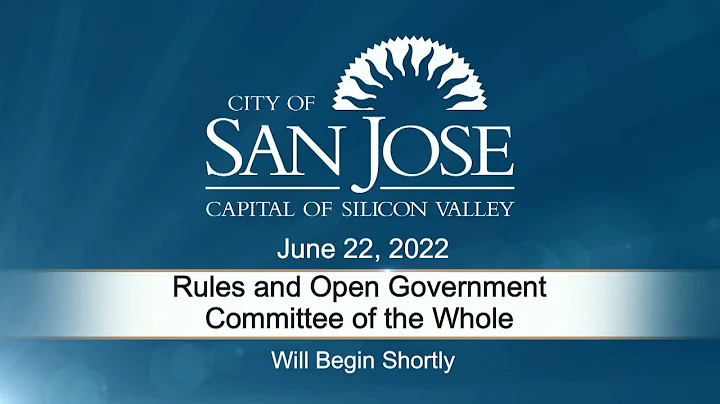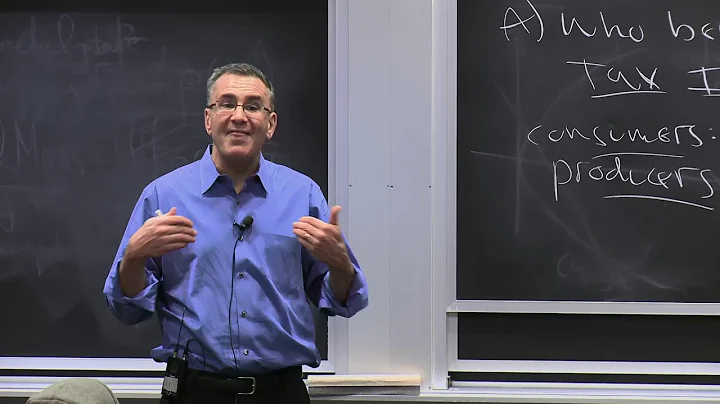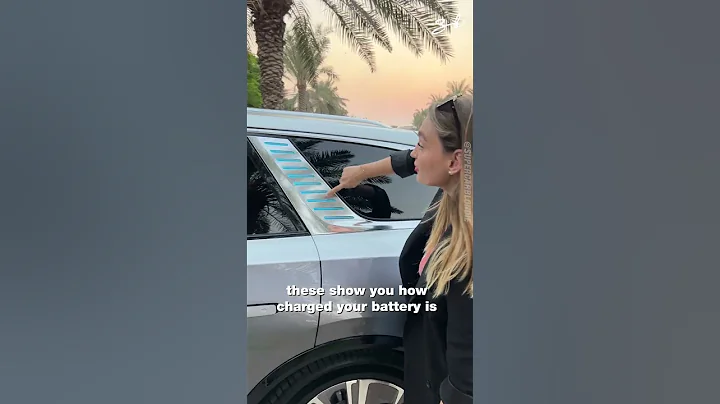At the national regular meeting on June 22, cars were once again named, requiring greater policy support and a promotion fee policy.
As early as May 31, the Ministry of Finance and the State Administration of Taxation issued an announcement on the reduction of vehicle purchase tax on some passenger cars. During the period from June 1, 2022 to December 31, 2022, the single vehicle price (not Passenger cars with a displacement of 2.0 liters and below (including value-added tax) not exceeding 300,000 yuan will be levied a vehicle purchase tax at a half rate. Prior to this, the State Council executive meeting had decided to reduce the purchase tax on some passenger cars by RMB 60 billion in phases for the automobile industry. The senior management of
vigorously promoted it, and the local government also responded actively.
Many places, including Beijing, Shanghai, and Guangdong, have introduced corresponding automobile consumption stimulus policies. Consumers can enjoy subsidies of up to 20,000 yuan when purchasing or replacing new cars. In addition, among the eight cities across the country that have implemented long-term car purchase restriction policies, five cities, including Shanghai, Guangzhou, and Shenzhen, have issued additional car purchase indicators, with the total increase in indicators reaching 165,000.
Under the influence of the "combination of policies", automobile production and sales will gradually approach normal levels, but it still takes time to verify whether the warm policies can force out the cold wave of the automobile market.

The importance of the automobile industry
Throughout the first quarter, affected by the rebound of the epidemic, the downward pressure on the economy was further highlighted. In addition to stabilizing real estate and expanding infrastructure investment, stimulating automobile consumption has become one of the important means of stabilizing growth.
As an important pillar of the national economy, the automobile industry has the characteristics of large size, long industrial chain, high correlation, wide influence, high consumption proportion, and both consumption and cyclical attributes. From the perspective of consumption attributes, cars have brand effect and are an important component of the total retail sales of domestic consumer goods (accounting for 10% last year). In the past ten years, the proportion of automobile consumption in household consumption expenditure has stabilized at 8.3%-11.1%, which can be called an essential medicine to expand domestic demand and stimulate consumption.
From a production perspective, the total output and added value of the automobile manufacturing industry account for 7.2% and 7.0% of the manufacturing industry respectively, ranking third and being large enough. From an investment perspective, in recent years, the proportion of automobile fixed asset investment in manufacturing investment has stabilized at more than 6%. In 2021, the output value of the automobile industry accounted for 7.6% of GDP, which is the top priority of national macro-control. From the perspective of the industrial chain, the automobile industry chain covers almost all areas of industrial production and generates demand support for the service industry. According to the complete consumption coefficient calculated by the input-output table , the upstream production end consumes a lot of non-ferrous metals , chemical products, computer electronic equipment, ferrous metals, rubber and plastics. At the same time, the downstream sales side relies on channel dealers and advertising and other marketing promotions, and has strong demand for supporting services such as wholesale and retail, business services, etc. In addition, the automobile industry has a great role in stimulating social production. Every additional unit of terminal demand will be amplified by the multiplier effect and drive other industries to release nearly three times the output effect.
Review of the previous three stimulus policies
The first round from 2009 to 2010 was mainly about purchase tax discounts, superimposed on cars going to the countryside, trade-in, and early scrapping subsidies for old cars and other policies.
Due to the low base of my country's automobile sales before, China's automobile sales began to grow rapidly after the introduction of the policy. In January 2010, automobile sales increased by 126.1% year-on-year. From July 2009 to January 2010, the growth rate of passenger car retail sales was 50 percentage points higher than the year-on-year growth rate of social retail sales, showing explosive growth. Driven by a substantial increase in demand, China's automobile sales reached 13.62 million units in 2009, surpassing the United States for the first time and becoming the world's largest automobile market.

The second round of stimulus is from 2015 to 2016. The main measure is to provide consumers with a subsidy of 3,000 yuan per vehicle for purchasing energy-saving cars of the above models before December 31, 2015. From October 1, 2015 to December 31, 2016, a vehicle purchase tax of 5% will be levied on passenger cars with a displacement of 1.6 liters and below. New energy vehicles are exempt from the purchase tax. At the same time, many places are required to lift restrictions on the relocation of second-hand cars to promote cross-regional flow and transaction activity.
In 2015, the growth rate of China's automobile industry slowed down after a rapid growth. After the second round of automobile stimulus policies was launched, automobile production and sales began to accelerate from the fourth quarter, and the growth rate of passenger cars once again exceeded the growth rate of total retail sales.In 2015, the production and sales of passenger cars successfully exceeded 20 million units. In 2016, China's passenger car sales reached 24.292 million units, a year-on-year increase of 15.1%. Passenger cars with a displacement of 1.6L and below achieved sales of 17.150 million units, a year-on-year increase of 22.1%. The effect of boosting consumption is significant. At the same time, the demand structure of the automobile market has improved significantly, with sales of new energy vehicles reaching 502,000 units in 2016, a year-on-year increase of 52.5%.
The third stimulus is from 2019 to 2021. The main measures are the exemption of purchase tax for new energy vehicles and the extension of the subsidy period, superimposed on the second-hand car tax reform, old car scrapping and renewal subsidies, and relaxation of purchase restrictions and other policies.
China's car sales peaked and fell in 2017, and have been stagnant since then. As of February 2020, car sales have recorded negative growth for 20 consecutive months. In 2021, new energy vehicles finally rebounded. Unexpectedly, the epidemic hit again, superimposed the supply chain crisis, and suppressed some consumer demand. Both ends of supply and demand were significantly under pressure. China's automobile industry encountered unprecedented extreme challenges.
After the policies were successively introduced in the second quarter of 2020, as companies resumed work and production, the supply side of the automobile industry recovered rapidly. In April of that year, automobile production increased by 2.4% year-on-year, and sales increased by 4.5% year-on-year. Looking at the demand side, passenger vehicle sales in April and May 2020 The year-on-year growth rate of vehicle retail sales exceeded the year-on-year growth rate of total retail sales by 2/4.6 percentage points; in July 2020, the retail sales of passenger cars increased by 7.9% year-on-year, 9 percentage points higher than the growth rate of retail sales. Overall, terminal demand improved slightly later than the supply side.
Comparing the effects of the three policies, the first car sales policy stimulus effect from 2009 to 2010 was the most significant, while the second and third policy stimulus effects were marginally weakened, especially the third stimulus, which focused on new energy and had the weakest effect. Caixin Think Tank estimates that car sales in 2019, 2020 and 2021 will be 25.79, 25.31 and 26.27 million units respectively, with growth rates of -8%, -1.9% and 4% respectively.

At the same time, the stimulation time interval is also shortening: from the first to the second stimulation, the stimulation time interval is 5 years, from the second to the third stimulation, the interval is 3 years, and from the third stimulation to the present, the interval is only 1 year.
From the perspective of subsidies, the first car-to-countryside policy was led by the State Council and funded by the central government. At this stage, it covered a wide range of vehicle models and the policy effect was the best. The subsequent two car drives to the countryside were obviously different. The subsequent series of car drives to the countryside were mainly led by car companies, with certain preferential policies provided by local finance and no national financial support. In addition, the market had changed from incremental to stock at that time, and the entire industry was in a downward cycle. It is understandable that the policy effect is not as good as the first time.
From the perspective of purchase tax reduction and exemption, the first two stimulus measures mainly targeted fuel vehicles, both at 5% in the first year and 7.5% in the second year. However, the purchase tax on new energy vehicles is still reduced from 2014 to the present, in conjunction with a series of cars were sent to the countryside to subsidize , and car sales increased significantly. The scope of subsidy for the model catalog is also the widest for the first time, and the stimulus effect is the best. However, the scope of the third subsidy model was significantly narrowed. The covered models were mainly A00, A0, and domestic mid-to-low-end electric vehicles, which accounted for only 2% of the total sales of models that year, a 15% decrease year-on-year for the second time.
A policy combination that exceeds expectations
Compared with the previous three rounds, this wave of policy intensity is generally beyond expectations.
First of all, from the perspective of coverage, the focus of this round of automobile stimulus policies has returned to fuel vehicles. In recent years, due to my country's vigorous promotion of subsidies for new energy vehicles, the development space of fuel vehicles has been squeezed. This year, due to the sharp rise in oil prices, the sales of fuel vehicles in the first quarter were only 4.92 million, and the year-on-year growth rate even dropped by nearly 20%, making the fuel vehicle market even worse. However, new energy vehicles cannot completely replace traditional fuel vehicles in the short term. In rural counties and other places where new energy infrastructure is imperfect, people are more inclined to buy traditional vehicles. Therefore, this round of automobile stimulus policies can be described as a timely help.
Secondly, the biggest highlight of this round of automobile stimulus policies is the reduction of automobile purchase tax. The previous purchase tax law stipulated that new energy vehicles were exempted from tax, while fuel vehicles required a one-time payment of 10% automobile purchase tax, not including the value-added tax of 1.17. The entire car purchase cost is still very high. From the perspective of preferential scope, this policy is obviously more than the previous two.The first two rounds of stimulus policies mainly targeted small-displacement passenger cars of 1.6 liters and below, while this round will halve the vehicle purchase tax on passenger cars with a displacement of 2.0 liters and below not exceeding 300,000 yuan, covering a minimum of 7.5 million yuan. The time limit is as long as half a year, so the number of vehicles that will benefit is obviously larger.
From a consumer perspective, the average market price of fuel vehicles with a displacement of less than 2.0L is around 120,000 to 200,000 yuan. According to this round of stimulus policies, the car purchase tax is levied at a half rate of 5%, which is equivalent to what every consumer can enjoy Discounts ranging from RMB 5,200 to RMB 8,600 are very helpful in improving consumers’ purchasing intention and confidence.

In addition, in order to cooperate with the central government, local governments have also introduced their own supporting policies, especially relaxing license restrictions. Guangzhou and Shenzhen took the lead in proposing to increase their fuel vehicle purchase targets by 30,000 and 10,000 respectively based on the previous car targets. Shanghai also increased its non-commercial bus license quota by 40,000 during the year. These two cities took the lead. I believe other cities will follow suit. The per capita income level of these first-tier cities is higher and the consumption potential is greater. Once restrictions are relaxed, it will bring a new round of automobile demand.
In the long run, can the automobile industry still thrive?
In the short term, with the advancement of "resumption of production and work" and the implementation of consumption stimulus, automobile production and sales will gradually pick up. In the medium term, as production and sales both increase, the situation of strong automobile supply and demand will continue for some time. Data from the China Association of Automobile Manufacturers shows that automobile production and sales in May showed a recovery growth trend, reaching 1.926 million units and 1.862 million units respectively, a month-on-month increase of 59.7% and 57.6% respectively, and a year-on-year decrease of 5.7% and 12.6% respectively. Among them, new energy vehicles still performed well, with production and sales exceeding 400,000 units in May.
However, in the long run, the impact of the epidemic will eventually subside. After the withdrawal of the new round of automobile consumption stimulus policies, it remains to be seen whether the automobile industry can thrive.
First of all, we must be clearly aware that while the intensity exceeds expectations, there will also be fewer available tools in the policy toolbox. And the overdraft effect of the policy must also be considered. The Northeast Securities research report shows that the overdraft effect of the second round of vehicle purchase tax reduction and exemption policies is the most obvious. The growth in passenger car sales in 2016 overdrafted the consumption potential in the next two years. In 2017, the overdraft effect was the most obvious. Sales growth dropped to 1.9%. The economy declined in 2018, and the industry even experienced negative growth. Although this purchase tax reduction no longer uses time as a yardstick, but emphasizes a total quota of 60 billion yuan, it is also hoped to minimize the side effects of overdraft.
Secondly, there is the problem of the ceiling of the automobile market. Huang Yonghe, senior chief expert of at China Automotive Center, and Tan Huilong, director of the Strategic Foresight Demonstration Department of Changan Automobile's Strategic Planning Department, both gave predictions of peak sales of 30 million. Their judgments are based on the city's road carrying capacity, the base of the consumer population, and fuel supply. and other elements. In addition, the rapid development of public transportation will also inhibit the growth of the entire automobile market. By the end of last year, China's urban rail transit had been put into operation in 50 cities, and the total length of operating lines had reached 9,206 kilometers. Last year, 1,237 kilometers of new rail transit operating lines were added.
In addition, the real estate crowding out effect of must also be considered. Before 2011, housing prices rose and residents' wealth increased, making a positive contribution to consumption. After 2011, housing prices showed a crowding-out effect. House prices rose and residents' debt increased, creating a crowding-out effect on automobile consumption. Affected by the skyrocketing housing prices, residents' loans exceeded disposable income in 2019, severely squeezing large-scale consumption such as cars.
From the demand side, my country's population is aging rapidly, the fertility rate is low, and the number of young adults is decreasing, which will inhibit automobile consumption demand. According to Maslow's demand theory, during an economic downturn, consumers will prioritize reducing growth needs, and cars are growth needs. In particular, the consumption willingness of the low-income group has decreased due to the epidemic, and more income has been converted into precautionary savings. Residents' consumption habits have undergone fundamental changes.
Finally, it is cost control and supply chain security. The increase in bulk raw materials is reflected in the price increase of automobile terminal prices. The Ministry of Industry and Information Technology clearly stated that new energy vehicle power batteries must improve their ability to secure key resources such as lithium, cobalt, nickel and other mineral resources and the pressure of rising prices.
In terms of supply chain, due to the impact of the epidemic and the conflict between Russia and Ukraine, the global automobile industry chain has problems of shortage of cores and batteries. The resulting production reduction problem of automobile companies is very serious. Especially this year's epidemic lockdown in Changchun and Shanghai has made the entire industry realize the importance of the automotive supply chain.
From an economic point of view, any "emergency" economic policy is more about increasing short-term demand, but fundamentally speaking, while introducing short-term stimulus policies, we should also start from the perspective of future demand to increase the income level of urban and rural residents. long-term mechanism. The new stimulus policy is not only to save the auto market, but more importantly, to achieve the long-term goal of stimulating the revitalization of the overall economy by boosting the auto industry.
However, in order to achieve this goal, every car person needs to think about it and there are still many things that need to be done.
----------------------------------
Shanglin Academy: Yang Fei, Ph.D. in Economics, university teacher, In-depth observation of industrial economic and financial events.











![[Zhongshan Century Cadillac - SAIC-GM Cadillac Flagship Store] Cadillac CT6 - champion model, 1) Champion model: CT6 won the double championship of medium and large luxury sedans in J.D. Power, China and the United States! - DayDayNews](https://cdn.daydaynews.cc/wp-content/themes/begin/img/loading.gif)









